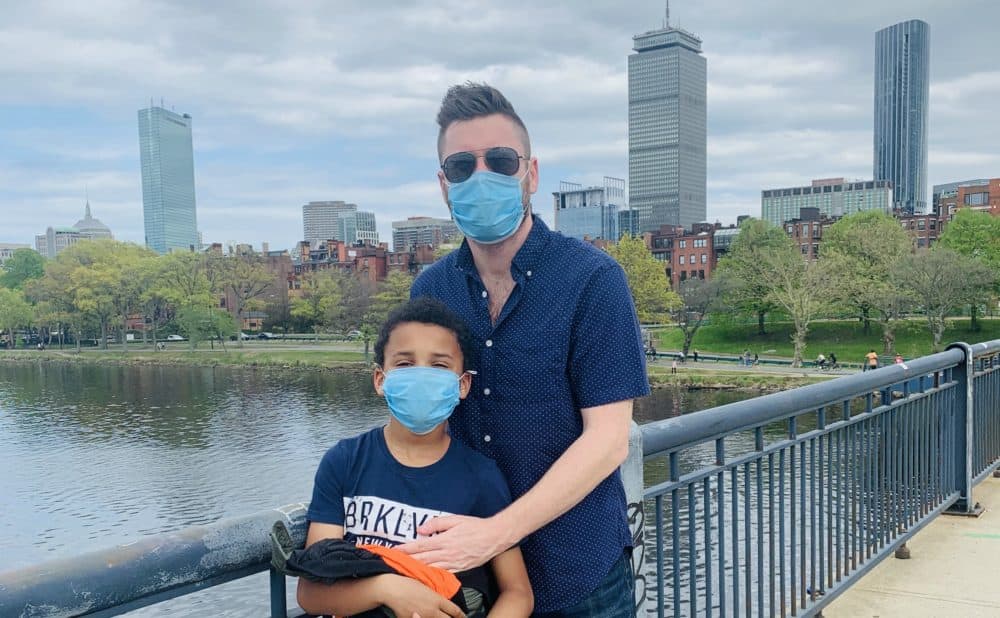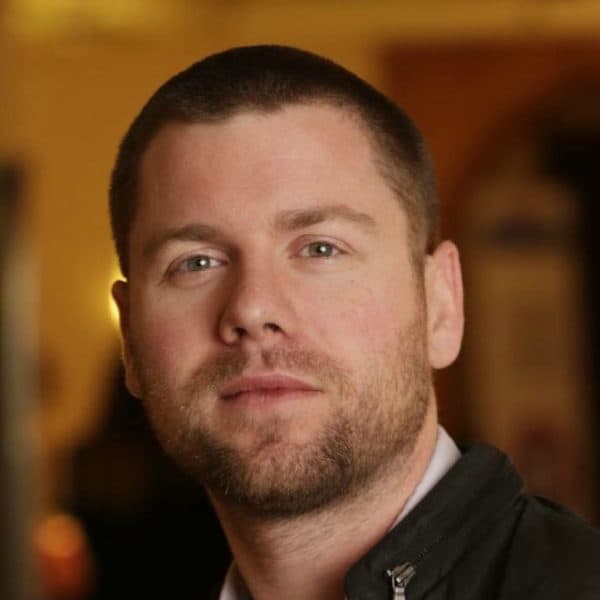Advertisement
Commentary
My Wife Is Black. My Son Is Biracial. But White Supremacy Lives Inside Me

My son is 9 years old. He’s big and beautiful and biracial, and although my wife and I have always known we would need to prepare him to face racism, we’ve never talked to him or his little sister about police violence against Black people. Not until now.
He wept when we told him about George Floyd. His voice shaking, he asked whether the same thing would one day happen to him.
My wife and I told him to draw about his feelings, and what he brought back to us broke both our hearts. In pen, he’d drawn a white police officer standing in front of a cruiser, holding up a smoking gun and looking down at an unseen corpse. My son had written the words “Killed Me,” with an arrow pointing down at his own body, lying lifeless just outside the frame of the page.
There’s nothing my son can do to prevent this nightmare from becoming a reality. There’s nothing he can do to change the way the world will see him when he grows into a tall, broad-shouldered Black man.
To protect my son, and every other Black boy and girl in America, white people must change the way our own eyes see the world. We must do the work of stamping out white supremacy where it lives: in our systems, and in ourselves.
There’s nothing my son can do to prevent this nightmare from becoming a reality.
In 2007, less than a year after I moved to Boston, a 22-year-old woman named Chiara Levin was killed by a stray bullet, caught in the crossfire between two gang members at a party in Dorchester. I followed the news on the radio for a week or so, never seeing a photograph of the victim’s face. Unconsciously, I assumed that she was Black. When I finally saw her picture in the paper — this smiling, pretty white girl with wild, curly hair — I thought: Oh.
There was a lot to unpack in that "Oh." Beneath my unspoken assumption about her race was another assumption: She was the type of person who attended parties with gang members. And beneath that: On some level, it makes sense that she was killed.
And then, even deeper, in a dark part of my mind that I didn’t even know was there: Her life was less valuable than a white person’s.
When I realized what was happening in my own brain, I shuddered. I wasn’t what anyone would describe as a racist. I was engaged to a Black woman whom I would marry later that year, and who would become the mother of my two children. But white supremacy had infected me in ways I’d never realized.
Advertisement
I’ve lived my entire life in a world filled with literal monuments to racism, a world where we regularly make unspoken justifications for living on land stolen from indigenous people, for honoring slave owners on our money, for tolerating enormous racial gaps in wealth and education and health outcomes. Even my awareness of Chiara Levin’s murder is an example of white supremacy in action; if she’d been Black, I doubt the news media would have latched onto her story. Journalists saw her white face, and the same thing that happened in my brain happened in theirs. Of all the murder victims in Boston, this is the one who matters, the white supremacist inside them whispered. This is the tragedy we will talk about for weeks, while the names of murdered Black men and women go unspoken.
I confess that there’s still a part of me that tries to look for “reasonable explanations” when I first hear of a Black person dying in police custody. A part of me looks to explain away the horrible things I don’t want to confront. If I’m going to be a part of the solution, this is the piece of me I need to destroy.
I confess that there’s still a part of me that tries to look for 'reasonable explanations' when I first hear of a Black person dying in police custody.
But how?
It’s a question I’ve asked myself a lot lately, and I think there’s only one acceptable answer: However I can.
I’m going to more actively look for ways to get involved, rather than hide in despair when the news makes me afraid for my children’s futures. I’m going to take my cues from Black activists who know what actions will make a difference in their own lives. Perhaps most importantly, I’m going to recommit to listening to and amplifying Black voices — and I’m going to try to sit and stay quiet during my own moments of discomfort, when their stories challenge the things I thought I knew.
I’m particularly interested to relearn American history from the perspective of the people who lived through it. The version I learned in school was so sanitized, so paternalistic: White people enslaved Black people, but then we saw that it was wrong, and we stopped. We forced Black people to live as second-class citizens in their own country for another century, but then we saw that it was wrong, and we stopped.
My wife is originally from Haiti, and several years ago, I learned the history of her country. It’s a very different narrative: The French got greedy, enslaving so many Africans that Blacks outnumbered whites in Haiti by 9-to-1. The enslaved people took advantage of their numbers and the machetes they’d been given to work the fields. They rose up, and they killed their masters, and they took their freedom.
It’s one of the most glorious, triumphant events in all of human history. And yet, when I read about it for the first time, my hand instinctively floated upward to protect my own throat.
This segment aired on June 26, 2020.
